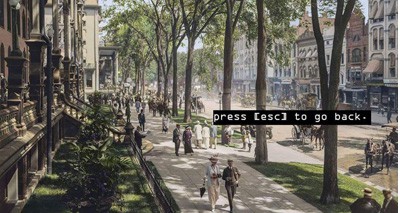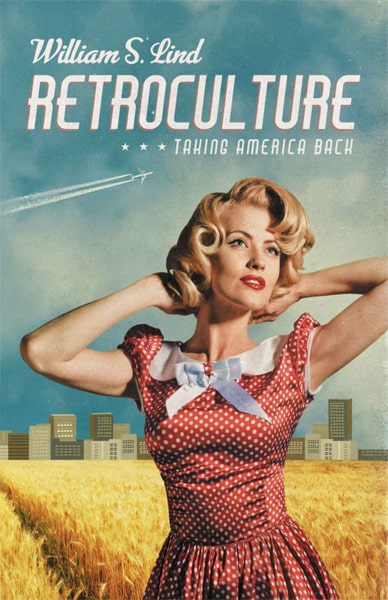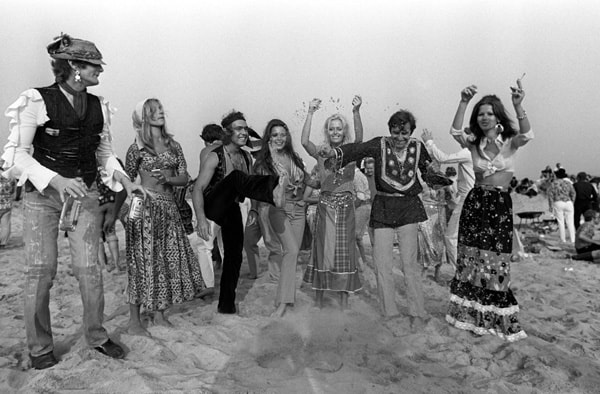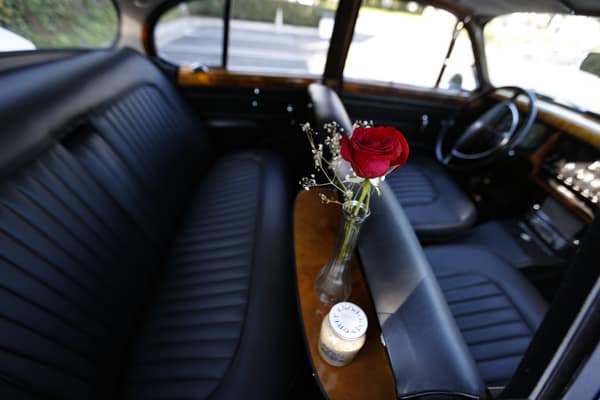Coming Home to What Is Ours
Ida Davis, American Renaissance, November 15, 2019

William S. Lind, Retroculture: Taking America Back, Arktos Media, 2019, 212 pp., $18.95.
William S. Lind is an American paleoconservative author best known for Fourth Generation Warfare Handbook, in which he predicted that the 21st-century will see fewer conventional wars, and more guerrilla insurgencies. These would be waged by non-state actors seeking power by winning the loyalty of the people they want to dominate. If that book was meant to help soldiers understand this new form of combat, his latest book, Retroculture, is a “sequel” to help civilians survive in an age of psychological warfare, in which our culture becomes a battlefield, and our minds are under siege.

In this struggle for the American soul, Mr. Lind believes that victory lies in a “strategic retreating to our past.” He writes that Americans have become vulnerable to self-defeating worldviews because we have lost our sense of who we are. The march of “progressivism” through our institutions since the 1960s has left society unrecognizable to Americans of a few generations ago, and those of us not yet brainwashed are desperate for an alternative to the “undefined and threatening future” that awaits us if nothing changes.
In response, Mr. Lind raises the flag of “retroculture,” a way of living that seeks to resurrect the hopeful, optimistic America of bygone days through “rediscovery” of our past and all the good it had to offer. Mr. Lind believes we can reclaim the “safe, stable, and comfortable” lives of our parents and grandparents, and regain control of our destiny by drawing on the wisdom of generations of Americans who still saw themselves as architects of the future rather than as victims of the present.
By adopting the fashion, manners, and way of life of those who came before us, “retro-Americans” can restore beauty, refinement, and meaning to their lives. More importantly, they can reclaim an identity rooted in reality — in the true, inspiring stories of our people — and not in the Leftist dogma with which our rulers have tried to replace those stories.
Why the past?
The idea that our past holds the key to our future may seem surprising. Mr. Lind puts it plainly: “Our past was better than our present.” Even egalitarians would be hard-pressed to claim that the day-to-day life of an average American half a century ago was worse than today’s. Their lives were governed by civility and grace rather than chaos and alienation. People lived thoughtful lives centered around human relationships rather than materialism or credentialism. Even in the face of terrible threats — depression in the ’30s, war in ’40s, nuclear proliferation in the ’50s — Americans seemed to be free of the despair the plagues us today. Even in dark moments, life was better — and Americans are beginning to ask themselves why.
Mr. Lind’s answer is powerful: Americans knew who they were and where they were going. Various strains of identitarianism pay lip service to the connection between a people’s identity and its past, but they underrate it as a tool for helping Americans takes back what is theirs. Understanding and practicing the values of our past is an important first step in unseating the Left as the arbiter of identity.
Our opponents understand the importance of the past. They understand that it is an essential part of identity, and that is why they attack ours so ferociously. They would not devote so much effort to condemning the Founders, destroying monuments to our heroes, and reducing our history to nothing more than a record of “the white man’s sins” if they did not realize that poisoning the past is the key to destroying our identity and subjugating our minds. Mr. Lind believes we must fight back by recovering and strengthening our ties to our history.
Mr. Lind tells us to ignore the “narrow-minded,” “politically-correct” accusations that we would be returning to an age of “intolerance” and “repression.” We should accept our past for what it was: a time of tremendous creativity, hope, and achievement, that gave rise to people worth learning from, and experiences worth recapturing. Mr. Lind believes that through retroculture, we can reclaim that past.
Where it went wrong
Mr. Lind pinpoints the rise of “selfism” in the 1960s as the beginning of America’s decline. He argues that while Americans’ individualist spirit dates to the founding, traditional moral values always held it in check. Those values taught us to “focus our lives outwardly,” to be “useful, helpful people,” and to master our desires. But the rise of “youth culture” movements such as the Beatniks and hippies exalted self-indulgent pleasure-seeking and threw off self-restraint in favor of “doing your own thing.” Modesty, honesty, and fair dealing gave way to the ever-more-demanding “self.”

(Credit Image: © Imago via ZUMA Press)
Of course, this self-focused youth culture did not lead to liberation, but to atomization and despair. Cut off from the values and beliefs that had defined American life, and left with only our appetites to guide us, modern Americans have become transient and isolated, with little sense of loyalty to community or country, and few higher causes to inspire them. The New Left seized on a generation’s growing suspicion of traditional Western institutions as an opportunity to further its cause. As Americans began to reject the society their ancestors built, the Left promoted an egalitarian ideology designed to hasten its destruction.
Today, politically-correct Leftism has become America’s “state ideology,” but Mr. Lind contends that our society’s pervasive unhappiness shows that people are waking up and realizing that this new ideology leads to a bleak future. Retroculture promises to return us to a “time before the wreck,” reconnecting us to an America that was innovative, optimistic, and thriving. Mr. Lind argues that by living in the same style as our ancestors, we can rediscover their worldview and rebuild what has been lost. Through retroculture, we can let the experiences that shaped their lives shape ours. The only difference is that modern people must be more intentional about it.
Going “retro”
There are different ways to adopt a retrocultural way of life, but Mr. Lind offers basic ground rules and plenty of suggestions. He encourages readers to “pick their own period” of history to which they would like to return, but strongly recommends going back at least to the 1950s. This was the last period when life was “really good.” Most things were still done the old way, and America had not yet been tainted by the fads and social experiments of the 1960s. Any period before that is an option, and Mr. Lind encourages readers to think about which era speaks most to their souls, and offers the best expression of the values they want to bring back to the modern world.
An essential component of “going retro” is recreating the “feel” of your chosen period. Mr. Lind invites us to start gently. Some people may begin by listening to music from their chosen era, taking up a “retro” hobby such as sewing or swing dancing, or adding a few accessories from their chosen period to their wardrobes. Others may go further and buy old houses and furnish them with heirlooms and antiques. Some may dress in vintage clothing, or even drive classic cars and take cross-country train rides instead of flying.

Retroculture can succeed without a perfect recreation of the past. Americans have always had a pioneering spirit, and to discount innovations would be as much a betrayal of our collective soul as it was to cede our morals to the selfism of the 1960s. New things have their place, so long as we appraise them with an appropriately “retro” attitude. We can build new houses according to the old style, with all the decorative hallmarks of our chosen period. We can use modern technology, while invoking the “retro” values of self-restraint to ensure that we don’t let it dominate our lives, and spend much of our time fostering human relationships. We can enjoy making our homes, wardrobes, and way of living more beautiful without losing ourselves to the pursuit of material things.
Because, at its core, retroculture is not about “things.” While Mr. Lind encourages readers to enjoy the romance and nostalgia they’re likely to feel by surrounding themselves with the trappings of the past, he is careful to emphasize that the material aspects of retro-life — art, architecture, home decor, fashion — are not retroculture’s end. Instead, they are tools that give us insight into the principles and faith of the Americans who created them. Form, Mr. Lind writes, is nothing without substance, and so as we bring back the beauty of bygone days, it is more important to bring back the values that inspired it.
It is the resurrection of the “substance” that unites every expression of retroculture and gives it meaning. Whether we choose to be inspired by the patriotism of the colonial era, the elegance of the Victorian period, or the happy domesticity of the 1950s, Mr. Lind believes that the past will connect us with a timeless sense of what it means to be an American. By living more as our ancestors did, we can retrieve the values that defined us, such as civility, charity, public spiritedness, craftsmanship, and stewardship.

A flower is shown in a classic car during a vintage car show held in Bowers Museum in Santa Ana, Nov. 10, 2019. (Credit Image: © Li Ying/Xinhua via ZUMA Wire)
Retroculture and white identity
Mr. Lind ignores race, but in every period he admires, our communities were overwhelmingly white, and people upheld values and shared in traditions that were expressions of our European roots. When Mr. Lind writes about “Americans,” he means white Americans — the people because of whom and for whom our civilization was built.
The “selfism” Mr. Lind decries made things worse, but it was multiculturalism and not selfism that set us on this disastrous course. The Civils Rights Acts, the Great Society, and the 1965 Immigration Act tore the ethnic fabric of our nation and turned institutions built to serve us into ones that threaten us. The Americans whose “good and pleasant” way of life Mr. Lind seeks to restore are dwindling in number. The 1960s were not an attack only on our psyche; they were the beginning of our replacement.
Our demographic landscape is radically different from that of the eras Mr. Lind calls us to emulate, and that makes building retroculture much more difficult. It is impossible to recreate the social cohesion, high trust, and fellow-feeling we had in the ethnically homogeneous world of the past, but as Mr. Lind writes, retroculture does not require perfection to succeed, and I believe it holds tremendous potential to help our people shape the future.
Retroculture will not stop the flow of immigrants, check high minority birth rates, or win elections. But it can help us regain a stable sense of self and some measure of dignity in the face of narratives of guilt, condemnation, and shame.
Race-realist scholarship has played an invaluable role in paving the way for white Americans to reclaim a sense of who we are, but it is not enough. Bell curves, genetic data, and statistics have helped countless whites realize that there is an “us,” but these things cannot teach us how to be us.
We cannot rely on American institutions to teach us, but we can still look to the past. We can open a conversation with those who came before, for whom being American meant holding fast to what is ours — not only for our own sake, but for posterity. Retroculture helps us experience some measure of the beauty, refinement, and grace that defined their lives.
Our ancestors led solid, respectable lives, and by learning from them, we can become people whom they would recognize and be proud to call their own. Retroculture alone is not enough, but it can inspire us to persevere in our fight to save our people, and offers us a taste of the world that could be ours.















